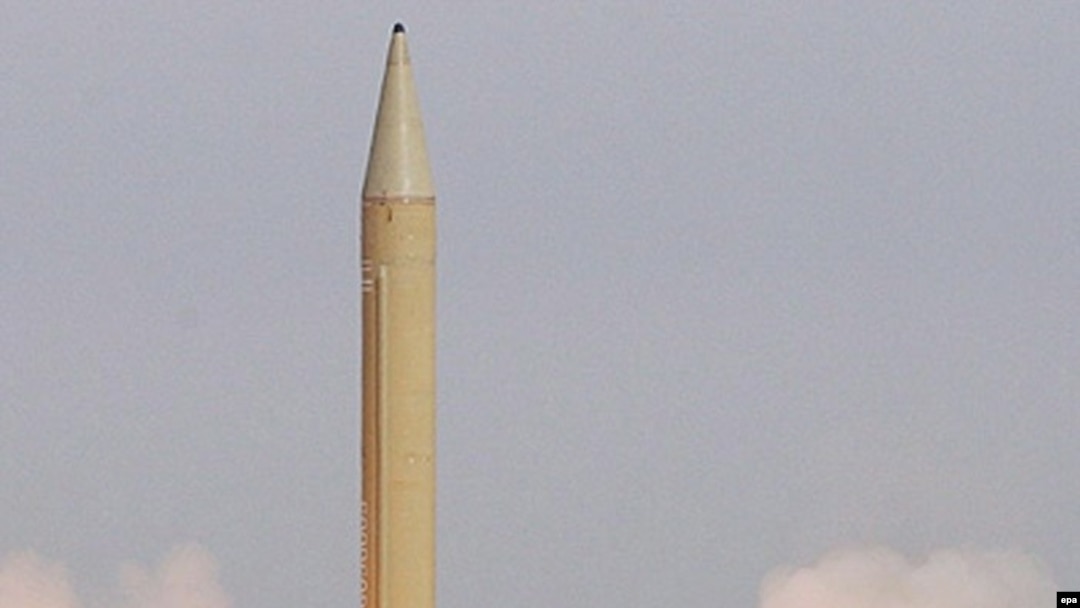RFE/RL: What kind of rocket does Iran appear to have tested and how does this differ from Iran's usual tests of its medium-range, surface-to-surface missiles, such as the Shahab-3?
Shannon Kile: Well, there is actually some confusion about exactly what Iran launched. The initial reports that came from the Iranian state media indicated that Iran was in fact trying to place a satellite into orbit, and the head of the Iranian space agency quickly dismissed that, saying no, that in fact this was a sounding rocket [a rocket bearing scientific instruments to probe the upper atmosphere] and the purpose of the rocket was basically to go above the 100 kilometer boundary that is commonly considered to mark the beginning of space. The type of rocket that Iran used appears to have been a single-stage, liquid-fuel rocket that probably is a derivation of one of their simpler, medium-range ballistic missiles.
RFE/RL: Iran says it wants to acquire the ability to one day launch its own satellites and that this test advances its capabilities. Until now, Iran has had to rely on Russia to build and launch its only satellite in 2005. Does the test, in fact, bring Iran any closer to its stated goals?
Kile: The rocket that was launched last week was basically a sounding rocket, this is half-a-century-old technology. It doesn't represent any major technological achievement for Iran. [However], it's important to keep in mind that there are a number of reports recently in trade and industry publications which indicate that Iran is preparing a real satellite launcher based on the Shahab-3 medium-range ballistic missile [Shahab-3 is Iran's most advanced surface-to-surface missile, with a range of some 1,300 kilometers.] This is expected to be a multistage rocket. If this is the case, then Iran would be a step closer to having a genuine indigenous capability to launch space satellites.
RFE/RL: U.S. officials say Iran's real intention for its rocket program is to develop a long-range ballistic missile capability, or even to acquire all the building blocks for an Intercontinental Ballistic Missile (ICBM). Does this launch take it closer to such a goal?
Kile: This launch probably does not represent the achievement of any technological milestones. But it is the case that U.S. and Western intelligence sources believe that Iran is working on a longer-range missile capability. And here I would distinguish a bit. It is a bit misleading to call it an intercontinental-range capability since that typically would mean a range greater than 5,500 kilometers [and] that is probably out of Iran's reach for the foreseeable future. However, the U.S. Defense Intelligence Agency believes that by 2012 [or] 2015, Iran will probably have the capability to launch a missile with a range of around 4,800 to 5,000 kilometers.
RFE/RL: If the technology involved in Iran's space program so far is modest, Tehran has nevertheless given a lot of publicity to this latest launch. Does the launch have some importance other than just testing technology? For example, does it have any political significance at a time when Iran is locked in a test of wills with the UN over its nuclear program?
Kile: I think it is important to keep in mind that this launch basically coincided with the expiry of the Security Council's deadline for Iran to halt its uranium-enrichment program. I think this is very much a show of Iran's defiance. I think it is a show of Iranian technological prowess as well, and I think that is something that, as a political symbol, can't be underestimated -- that Iran's nuclear program and to a less extent its aerospace program is a source of national pride in Iran. It is a potent symbol of Islamic modernity, that Iran is a developed country. So in terms of rallying support for the regime, I think you really have to see the launch in that context.
Talking Technical
CASCADES AND CENTRIFUGES: Experts and pundits alike continue to debate the goals and status of Iran's nuclear program. It remains unclear whether the program is, as Tehran insists, a purely peaceful enegy project or, as the United States claims, part of an effort to acquire nuclear weapons.
On June 7, 2006, RFE/RL correspondent Charles Recknagel spoke with nuclear expert Shannon Kile of the Stockholm International Peace Research Institute in Sweden to help sort through some of the technical issues involved. "[Natanz] will be quite a large plant," Kile said. "There will be about 50,000 centrifuges and how much enriched uranium that can produce [is] hard to say because the efficiency of the centrifuges is not really known yet. But it would clearly be enough to be able to produce enough [highly-enriched uranium] for a nuclear weapon in fairly short order, if that's the route that they chose to go...." (more)
RELATED ARTICLES
Tehran Says It Is Working On Advanced Nuclear Fusion
Would Light-Water Reactor Suit Tehran's Needs?
Satellite Images Raise Questions About Iran's Nuclear Program
Centrifuges And Political Spin?
How Close Is Iran To Getting Nuclear Bomb?
Iran: The Worst-Case Scenarios
THE COMPLETE STORY: RFE/RL's complete coverage of controversy surrounding Iran's nuclear program.


